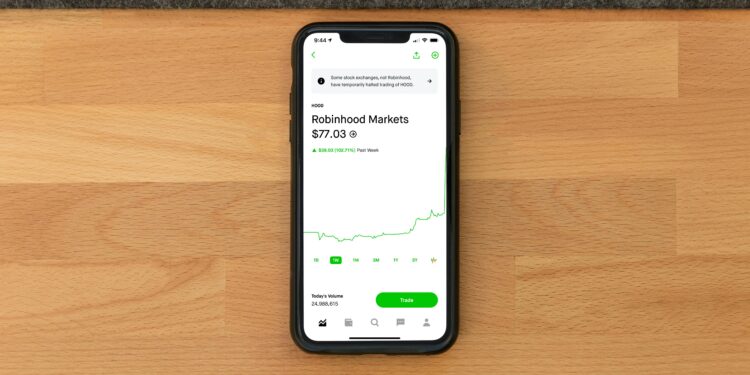Exploring the roadmap and risks behind the bullish case for HOOD
Robinhood Markets (HOOD) has captured investor imagination with its rapid growth, expanding fintech reach and a valuation that implies ambitious upside. Some analysts believe the stock could be a $200-plus opportunity under the right conditions.
Robinhood has grown revenues from roughly $280 million in 2019 to about $2.9 billion in 2024, an annual growth rate of around 60%. If that trajectory were sustained (say 30–35 %+ growth annually), revenues could climb to ~$7.3 billion by 2027, with net margins perhaps reaching ~40 %. That scenario gives earnings of around $2.9 billion and, at modest P/E multiples, a stock price potentially near the $200–$230 range.
Furthermore, Robinhood’s business model is compelling: it appeals heavily to Millennials and Gen Z investors with zero-commission trades, crypto access, and expanding services. Also, the shift from simply a trading app toward a broader platform (wealth management, crypto, overseas expansion) enhances the total addressable market.
Risks and caveats
However, hitting $200 is far from guaranteed. Key risks include regulatory pressures (especially around payment for order flow) and reliance on the volatile crypto-market. Also, while growth has been strong, many analysts still see targets well below $200; consensus targets hover around $130–$160 currently.
Market sentiment, competition from other brokerages, margin interest rate changes and macro-economic headwinds add further risk.
Bottom line
If Robinhood can keep execution strong—sustaining high growth, improving margins, and expanding its user and service base—then a move toward $200 per share is within the realm of possibility. But given the uncertainty and the valuation premium already priced in, this remains a bullish scenario rather than a base case. Investors should weigh both opportunity and risk before banking on that level.
You might like this article:Instacart Surges on Strong Q3 Results and AI-Driven Growth Strategy











